

You are here
Nuclear ghosts and the atomic landscape of the american south.
Along US Highway 25, near Hartsville, Tennessee, a concrete cooling tower looms over the pastoral landscape. Built in the late 1970s by the Tennessee Valley Authority (TVA), a federally owned public power company and regional economic development agency, the tower is a remnant of what TVA envisioned as the world’s largest nuclear plant.
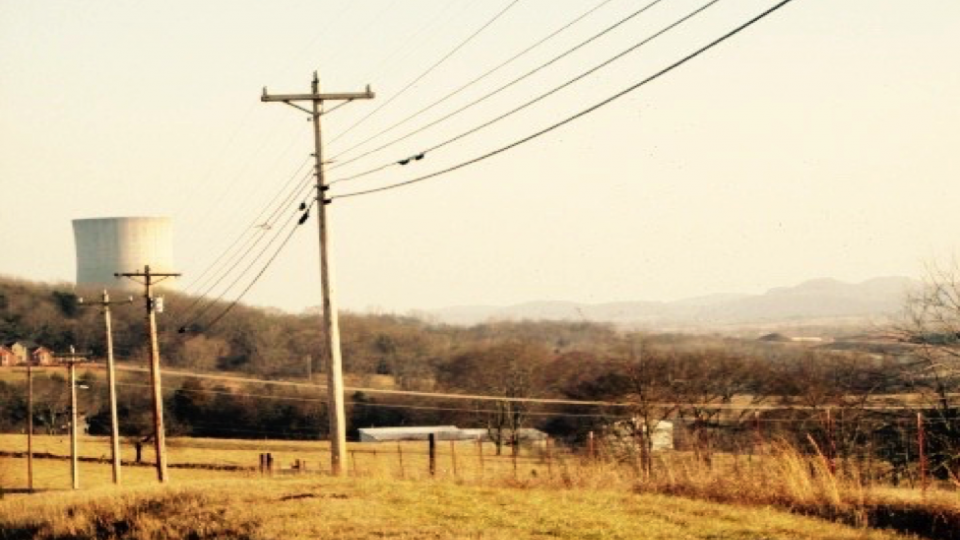
Approaching Hartsville site, Highway 25
Credit: Caroline Peyton, 2015

When Congress created TVA in 1933, its objectives included flood control, providing low-cost electricity, and fostering social transformation in the Tennessee Valley, a historically impoverished and underdeveloped region. By the 1970s, TVA’s priorities had shifted to producing cheap, abundant power, and the agency aggressively embraced nuclear energy in response. However, external and internal factors conspired against TVA’s nuclear visions; of the seventeen reactors planned, only six operate today. Some cancelled projects exist only as blueprints, while others are fragments dotting the valley’s landscape—curious monuments of metal, concrete, and vegetation. Hartsville’s nuclear ghosts are part of a broader history, beginning in the 1950s, when southern politicians promised “regional salvation” through the atom and encouraged extensive nuclear development in the American South. Shifting our gaze away from the atomic histories of western states more fully illuminates the expansive nature of the United States’s nuclear legacy and the debates it produced. These relics symbolize the uneven process of modernizing the Tennessee Valley, and by extension, the American South.
Examining Hartsville’s nuclear ruins reveals an enviro-technological controversy that pitted local knowledge and customs against TVA planners, whose cost-benefit analysis often obscured risks and consequences associated with nuclear power. While many residents, including area native and former Vice President Al Gore, supported the plant’s construction in the hopes of greater employment and economic development, others criticized TVA’s plan. Opponents levied common complaints against nuclear power, such as radiation exposure, but also viewed the project as destructive in more subtle ways. If nuclear power threatened lives, the plant also threatened a way of life, one intimately connected to the environment.

Hartsville nuclear site today
Credit: Amy Heiden, http://amyheiden.com

Before TVA’s arrival, the Hartsville site contained farmland surrounded by woods. In the adjacent Cumberland River, fish species such as walleye and catfish thrived, and an abundance of waterfowl inhabited the area. For some locals, TVA’s environmental impact statement (EIS) underestimated the risks of thermal radiation, flooding, and catastrophic accidents. Residents Faith and William Dixon, along with other intervenors, alleged that the plant’s thermal radiation threatened an endangered mussel species: the pink mucket ( Lampsilis orbiculata ). Eradication of the area’s mussel population also meant the loss of local customs such as harvesting mussels, already a dying tradition as dams altered waterways.
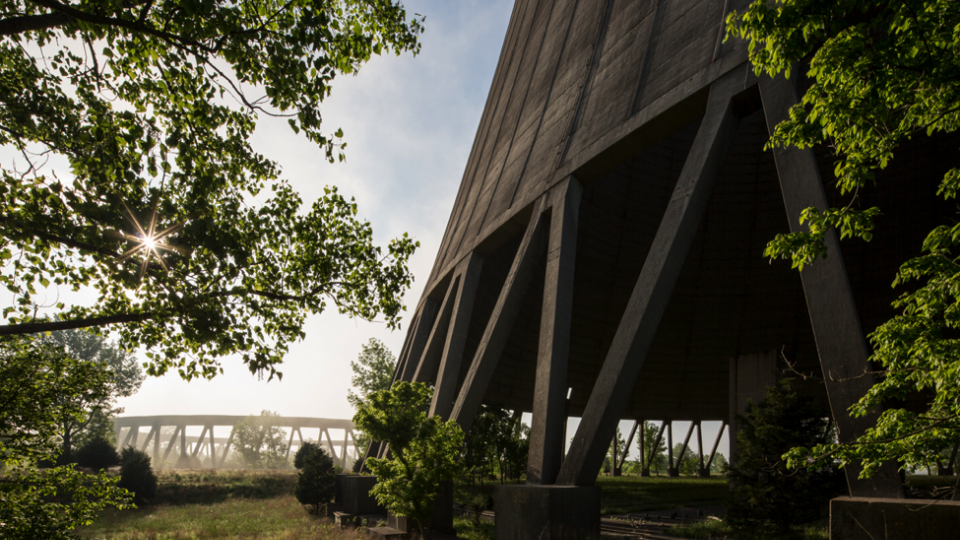
Hartsville’s cooling tower
The Hartsville project jeopardized local practices in other ways. The plant threatened the “blessings” of rural life, characterized by a sense of wildness and autonomy in environmental practices. One area resident, Linda Gentry, predicted in a letter to the editor of the Macon County Times published on 2 June 1975 that the project would result in “a locked-up experience,” where children could no longer wander freely. The project endangered the hallmarks of rural life: listening to whip-poor-will calls and chasing “possums, rabbits, and raccoons.” Another resident, Tom P. Thompson, Jr. questioned TVA’s failure to quantify the loss of communal hunting land in their EIS, challenged the agency’s assurances that waterfowl had ample habitat elsewhere, and feared the effects of radiation upon wildlife. Losing communal spaces and waterfowl habitats threatened the area’s ecology and the rituals of southern culture, particularly duck hunting. Mussel gathering and hunting waterfowl reinforced a deeper connection to the soil, to blood, and to the Cumberland River. Like the Tellico Dam, which altered the valley’s last “wild” river, TVA’s nuclear projects similarly emasculated the southern landscape, where government bureaucracies poached land through eminent domain and restricted community control of wildlife. In this sense, residents articulated a sophisticated understanding of how large-scale, high-risk technological systems transform, as Ursula Heise puts it, “the individual’s relationship to the local.”
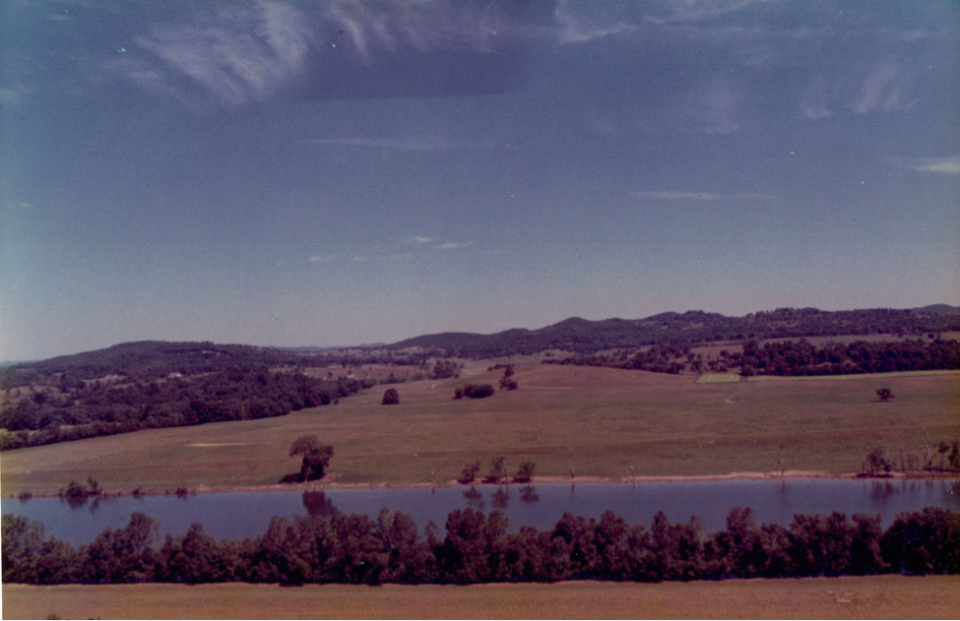
Hartsville site in 1975 before construction began. Aerial Photograph.
Credit: Tom P. Thompson, Jr., 1975
This work is used by permission of the copyright holder.
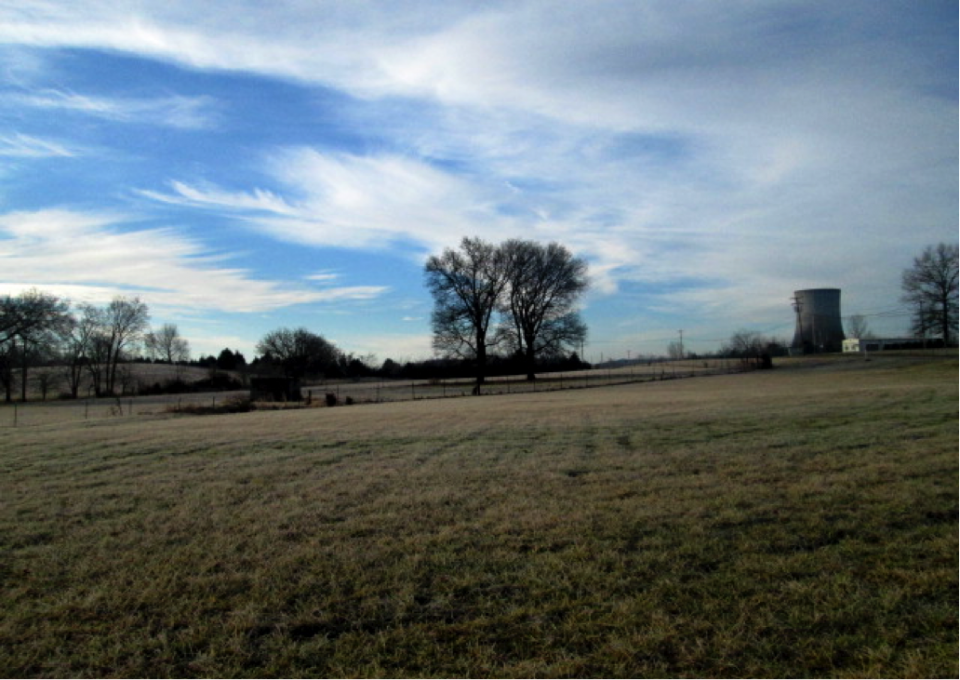
Hartsville site in 2015
Despite objections, construction on the plant began in 1976, but TVA soon faced obstacles, such as rising costs and safety issues. In August 1984, after spending over four hundred million dollars, the agency cancelled the Hartsville project. Today, TVA owns much of the land; it has only sold a small parcel to an economic development group whose latest project is a privatized prison with scenic views. As for the cooling tower, locals derisively call it a “used beer can.” Pointedly, residents have employed a symbol that conjures images of the American South and “white trash,” those poor, white southerners in rural areas that encouraged TVA’s conception in 1933. Unlike a venerated ruin, a “privileged site of reflection…a favored image of a vanished past,” Hartsville’s tower evokes a less treasured product of modern society: trash. Ultimately, the ruins capture TVA’s conflicted identity, where the agency’s early “dreamers with shovels” promised a better life through economic development via cheap electricity, and the controversial practices that made TVA planners appear as plunderers, leaving behind cast-aside objects with little regard for the communities or the environments it altered.
Archival sources about the Hartville controversy are available at the National Archives-Southeast Region in Atlanta, Georgia: records of the Tennessee Valley Authority, RG 142. Newspaper sources have been collected by Betty C. Scott in Hartsville Nuclear Plant, 1973–2002: A Newspaper and Magazine Account of the Hartsville Nuclear Plant and Louisiana Energy Systems (Macon: Ridge Runner Publications, 2007).
How to cite
Peyton, Caroline. “Nuclear Ghosts and the Atomic Landscape of the American South.” Environment & Society Portal, Arcadia (Autumn 2015), no. 19. Rachel Carson Center for Environment and Society. https://doi.org/10.5282/rcc/7329 .
ISSN 2199-3408 Environment & Society Portal, Arcadia
2015 Caroline Peyton This refers only to the text and does not include any image rights. Please click on an image to view its individual rights status.
- Hargrove, Erwin C. Prisoners of Myth: The Leadership of TVA, 1933–1990 . Princeton: Princeton University Press, 1994.
- Hecht, Gabrielle. The Radiance of France: Nuclear Power and National Identity after World War II . Cambridge, MA: MIT Press, 2009.
- Heise, Ursula. “Afterglow: Chernobyl and the Everyday.” In Nature, Culture, and Literature, vol. 3, edited by Catrin Gersdorf and Sylvia Mayer. Amsterdam: Rodopi, 2006.
- Hughes, Thomas Parke. American Genesis: A Century of Invention and Technological Enthusiasm, 1870-1970 . Chicago: University of Chicago Press, 2004.
- Lilienthal, David E. TVA: Democracy on the March . 2nd ed. 1944. Reprint, New York: Harper & Brothers, 1953.
- Stoler, Laura Ann, ed. Imperial Debris: On Ruins and Ruination . Durham: Duke University Press, 2013.
- US Nuclear Regulatory Commission. Final Environmental Statement Related to Construction of Hartsville Nuclear Plant of the Tennessee Valley Authority . Washington, DC: US Nuclear Regulatory Commission, Office of Nuclear Reactor Regulation, 1975.
- History of TVA
- The US Fish and Wildlife Service on the pink mucket
- Containment Board Game by Caroline Peyton, Anthropocene Cabinet of Curiosities
- “Imagining a New Eden in the Nuclear West.” Arcadia , 2019.
- Print page to PDF
About the author

University of South Carolina, USA
- Infrastructure
- Landscape Transformation
- endangered species
- nuclear power
Explore on map
Explore on timeline.
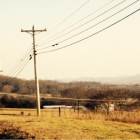
All Arcadia Collections
Recent contributors.

- Hartsville Tourism
- Hartsville Itineraries
- Hartsville Hotels
Robinson Nuclear Plant Ticket Price, Hours, Address and Reviews
- North America
- United States
- South Carolina
- Things To Do In Hartsville
Robinson Nuclear Plant
- Address: 3581 W Entrance Rd, Hartsville, SC 29550, USA, United States Map
- Tags: Family And Kids
Robinson Nuclear Plant is an important asset to the people in Hartsville. Named after H. Burton Robinson, a former executive vice president of Carolina Power & Light, this nuclear plant has one Westinghouse 735 MW pressurized water reactor. As you walk around the place, you will also see the Robinson Lake near the plant. What makes this plant important is the fact that it was the first commercial nuclear power plant in the southeastern United States. You will get to know the workings of this nuclear plant by the staff members once you are here.
More about Hartsville
Personalize your visit to the city by chalking out a plan using Hartsville trip planner .
Hotels like Quality Inn Hartsville, Landmark Inn, Hampton Inn & Suites - Hartsville, Sc and Fairfield Inn Hartsville will solve your problem of where to stay in Hartsville .
Choose from variety of exclusive Hartsville vacation packages for your next visit or create own own. Check out the various options for how to reach Hartsville and finish off your vacation package by booking the ideal transfer.
How to Reach Robinson Nuclear Plant
- By rented car or taxi.
Love this? Explore the entire list of places to visit in Hartsville before you plan your trip.
Fancy a good night's sleep after a tiring day? Check out where to stay in Hartsville and book an accommodation of your choice.
- Robinson Nuclear Plant Address: 3581 W Entrance Rd, Hartsville, SC 29550, USA, United States
- Try the best online travel planner to plan your travel itinerary!
Robinson Nuclear Plant Reviews & Ratings

Attractions Nearby
- South Carolina Cotton Museum Home Of The Lee County Veterans Museum

Can anyone visit the plant or are there regulations?
- Hartsville Itinerary for 1 day
- Hartsville Itinerary for 2 days
Hartsville Nuclear Plant
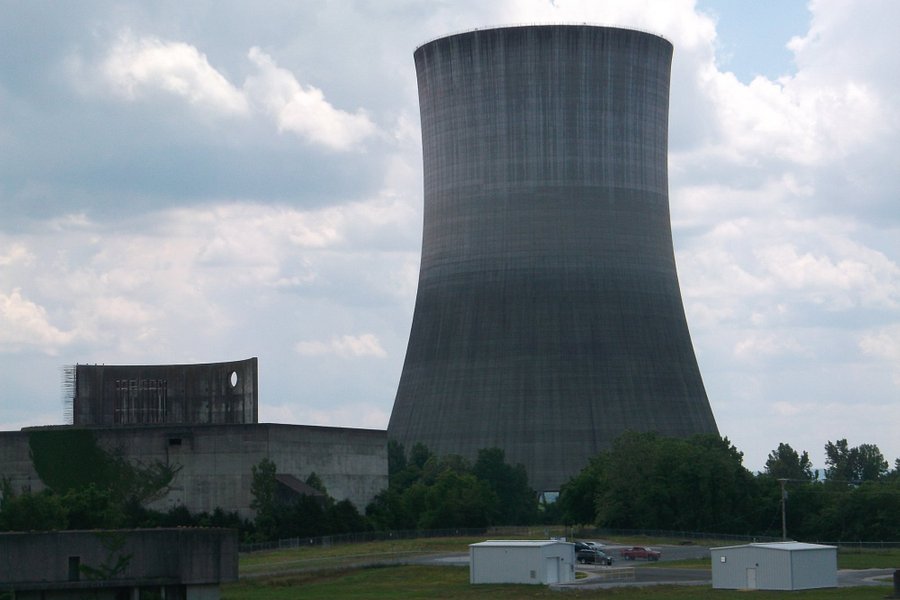
Most Recent: Reviews ordered by most recent publish date in descending order.
Detailed Reviews: Reviews ordered by recency and descriptiveness of user-identified themes such as waiting time, length of visit, general tips, and location information.
- (13.01 km) The BirdDog Farm Cabin #5
- (13.27 km) The BirdDog Farm Cabin #1
- (13.27 km) BirdDog Farm Cabin #2
- (13.27 km) The BirdDog Farm Cabin #4
- (13.66 km) BirdDog Farm Cabin #3
- (7.68 km) Hartsville Taco Company
- (8.31 km) Pig Pen Barbecue
- (9.25 km) La Quesadilla
- (7.77 km) Dillehay's Cafe & Catering
- (7.75 km) Village Pizza
6 things to know about TVA and nuclear power

The Tennessee Valley Authority is nearing completion on a new nuclear reactor at its Watts Bar power plant in Spring City, Tenn. TVA hopes to begin operation in December 2015, making it the first new unit to come online in the 21st century.
TVA officials say nuclear energy is safe and reliable and the new reactor is a 40-year investment in carbon-free, baseload power. But critics say the project is too expensive and not the right approach to combating climate change.
How much electricity will the new Watts Bar reactor produce?
The reactor — the second at the Watts Bar power plant — is expected to produce 1,150 megawatts of electricity a year. That's enough to power the equivalent of 650,000 homes.
That's a lot of power. So how much is this going to cost?
TVA officials say the project is on time and on budget. But that budget is higher now than in 2012, when finishing the reactor was expected to cost $2.5 billion.
Now, TVA says the reactor is expected to cost between $4 billion and $4.5 billion.
How long is it taking to build Watts Bar?
TVA began work on the second reactor in 2007. But that's just this latest round. Technically, work at Watts Bar, a planned two-unit nuclear power plant, began in 1972.
Most of the major infrastructure, such as the 535-foot-tall cooling towers and containment buildings, were built between 1972 and 1985, when TVA halted its nuclear efforts.
Work on Unit 1 resumed in 1992, and it came online in 1996, the last new reactor to begin operating in the 20th century.
Are there other nuclear power plants where TVA has started construction only later to stop the efforts?
Yes. TVA has had an on-again, off-again relationship with nuclear power.
It has spent billions to start construction on power plants, only to shutter them before completion, citing changing power demand, politics and debt considerations. The utility spends tens of millions each year maintaining the sites.
In Alabama, TVA started work on the Bellefonte nuclear plant and has spent $6 billion on it since 1974. It remains unfinished. To complete the plant, TVA estimates it would need between $7.4 billion and $8.7 billion.
Closer to Nashville, TVA started work on a proposed nuclear power plant in Hartsville. A single cooling tower — 200 feet tall by 200 feet wide — was built before work stopped. Now TVA uses the site for storage.
There are private investors and others pushing TVA to restart work on the Bellefonte plant. But spokesman Scott Brooks said TVA isn't investing in nuclear beyond Watts Bar without "more serious consideration of future demand."
How much of TVA's power comes from nuclear?
Just over a third — 36 percent — in 2013 came from nuclear. In addition to Watts Bar, TVA operates the three-unit Browns Ferry nuclear power plant in Wheeler, Ala., and the two-unit Sequoyah nuclear plant near Chattanooga.
Here's a breakdown of where TVA generates its power, in millions of kilowatt hours.
- Coal-fired: 62,519 — 43 percent
- Nuclear: 52,100 — 36 percent
- Hydroelectric: 18,178 — 12 percent
- Natural gas and/or oil-fired: 13,102 — 9 percent
- Renewable resources, non-hydro: 9 — Less than 1 percent
TVA says the second Watts Bar unit could be the first new reactor to begin operations in the 21st century. Is there competition?
There are three utilities that have reactors under construction, according to the Nuclear Regulatory Commission.
South Carolina Electric & Gas Co. is building two reactor units at its Virgil C. Summer Nuclear Station in Jenkinsville, S.C.
Likewise, the Southern Nuclear Operating Co. is building two reactor units at its Vogtle Electric Generating Plant in Waynesboro, Ga.
But far more nuclear power plants are in some form of decommissioning, according to the NRC, as companies find it too expensive to repair aging units or can't compete economically with cheap natural gas.
Reach Duane W. Gang at 615-726-5982 and on Twitter @duanegang.
- Car Rentals
- Airport Transfers
- Attractions & Tours
- Bundle & Save
- Destinations
- Trip.com Rewards
Hartsville Nuclear Plant
Explore near hartsville nuclear plant: where to stay, eat, and visit, hartsville nuclear plant reviews: insider insights and visitor experiences.

Nice to see
We have been there a few times, its kinda cool to see once. You can see the top all around Hartsville. No big deal for locals but visitors like to see it.


Wasted money
They never finished the plant so it just sits wasted at the site All you can really see is the cooling towers but that is it

Nuclear Plant- History
People need to visit and see in person a part of our energy history. Although this plant was never operational, you can get a sense of the size and construction of the facility. The one cooling tower...
Nearby Attractions
Popular types of attractions in trousdale county, popular restaurants in trousdale county, popular destinations, recommended attractions at popular destinations, more things to do in trousdale county.
- Customer Support
- Service Guarantee
- More Service Info
- Website Feedback
- About Trip.com
- Terms & Conditions
- Privacy Statement
- About Trip.com Group
Other Services
- Investor Relations
- Affiliate Program
- List My Property
- Become a Supplier
PowerCom Industrial Park Was Created in 2002 on the Hartsville Nuclear Site, but Business Was Slow
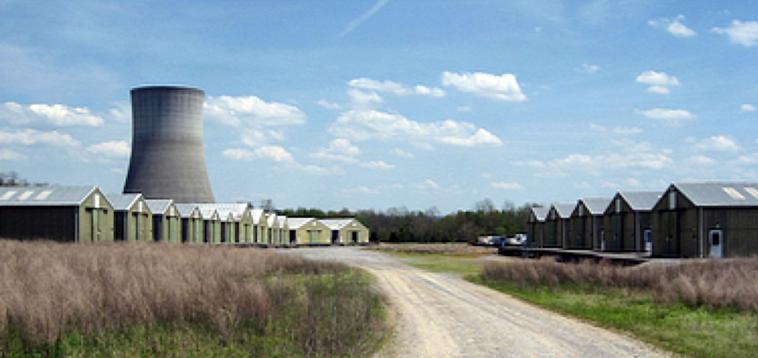
Tennessee Central Economic Alliance.
After the Hartsville Nuclear Complex was canceled, the 1,500 acres owned by TVA remained empty for almost 20 years, until over 500 acres were sold for the creation of a “quality industrial park” intended to remedy the region’s sluggish economic growth.1 The land was purchased by the Four Lake Regional Industrial Development Authority for $1.7 million in June 2002 to begin the construction of PowerCom Industrial Park, on the condition that they complete $1.5 million in infrastructure improvements by 2007.
The Four Lake Authority (now known as the Tennessee Central Economic Alliance) was optimistic about PowerCom’s potential impact on the local economy, raving about its new development opportunity in Trousdale’s “innovative” landscape. PowerCom promised to work with the local Tennessee College of Applied Technology to populate the workforce with Trousdale’s “potent labor pool,” equipped with “skills honed by the twenty-first century training programs” of the college.2
Despite monetary investments in infrastructure and incessant optimism about the project, Trousdale residents did not experience its proposed effects. The median household income in the county trailed several thousand dollars below the national average3, and with on-site spending surpassing $200,000 annually, county-wide retail sales per capita remained less than half the national average.4
1 Tennessee Valley Authority, “Environmental Assessment and Finding of No Significant Impact: Hartsville Nuclear Plant Site, Trousdale and Smith Counties, Tennessee, Transfer of TVA Property for Industrial Park,” March 2002, accessed Oct. 1, 2015, https://jobs.tva.com/environment/reports/hartsville/hartsville_ea.pdf . 2 Tennessee Central Economic Alliance. Trousdale County Regional Profile, accessed October 1, 2015, http://tennesseecentral.org/regional_data/regional_profile/trousdale_county . 3 City-data.com. Trousdale County, TN. Accessed 10 2015. http://www.city-data.com . 4 US Census Bureau. 2014. “Trousdale County, TN QuickFacts.” Census.

A message from United Cleanup Oak Ridge, LLC
Oak Ridge: The Future Begins With Cleanup
TVA Prepares to Write Final Nuclear Chapters
Last week, it was revealed publicly that a Draft Resource Plan being floated by the Tennessee Valley Authority (TVA) includes the presumption that the long-unfinished Bellefonte nuclear plant near Scottsboro, Alabama, will not be completed. TVA's nuclear energy history will span 50 years this June, and there are developments in the works with Bellefonte and one other TVA plant to be mentioned later. All are now expected to shake out this year, and may preface the final volume of that long up-and-down history.
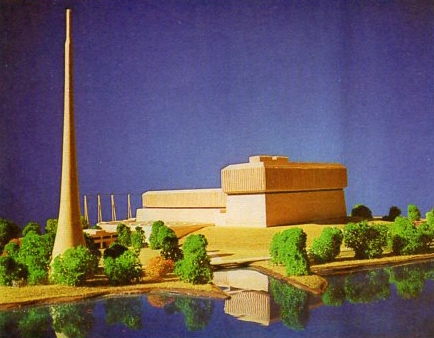
Initial model of Browns Ferry nuclear plant as originally conceived and ordered as a two-unit plant. From brochure "TVA Power 1967."
The beginning
In June 1966, TVA announced that it would order and construct its first nuclear plant in north-central Alabama. This plant, Browns Ferry, would be designed to house the first two General Electric BWR/4 reactors built anywhere. The units would each produce 1065 MWe net (the most powerful boiling water reactors ordered at that time) and were intended to enter service in a short time span-1970 for Unit 1, and 1971 for Unit 2, or four years and five years respectively.
Construction of the station began in May 1967, but one month later TVA made a decision to add a third unit of identical type to the station-in the same structure, now to be expanded. TVA stated that the third unit would give the station a total capacity of 3456 MWe and make it the most powerful steam-driven electric generating station of any sort in the world. The construction and testing of the station did not meet those early, optimistic goals.

Browns Ferry nuclear plantartist's concept of final three-unit design. From TVA Browns Ferry brochure 1976.
WASH-1174-71, the annual U.S. Atomic Energy Commission publication on the progress of nuclear technology, was issued covering 1971's developments. In that volume, the completion dates of the first two units were pushed back to 1972 and 1973 respectively; the third unit, originally hoped to be on-line in 1972, was delayed to 1973-revealing the first of a number of delays.
Growing demand and start of a nuclear fleet
Both the size of TVA's power generation and distribution facilities, and the expected demand growth it was facing in 1966-1967, were somewhat amazing for the time period. In 1967, TVA was operating 14 GW (gigawatts) of steam-generating capacity in a total of 11 plants; it also had four GW of capacity in hydroelectric power provided by no fewer than 47 dams. At that time TVA was building six GW of additional steam power (more than half of this was Browns Ferry, with the rest coal) and it expected to have more than 24 GW on-line by 1972. This was all necessary because TVA's growth in demand was so explosive.
According to the brochure TVA Power 1967 , electricity use was clearly growing. It showed that residential use had doubled from 1950 to 1954 and again from 1954 to 1960, and it was expected to double again between 1960 and 1968. Together with increasing municipal and industrial load, this laid out a requirement for vastly increased generating resources. Nuclear energy was showing itself to be profitable toward the end of the 1960s. Reliability and capacity factors on installed plants began to improve markedly. Nuclear fuel was an important addition to a company that was already burning 27 million tons of coal per year.
In April 1968, TVA ordered a two-unit nuclear station for Tennessee-Sequoyah nuclear plant-with an expected completion date of 1974. Sequoyah was to be built with Westinghouse pressurized water reactors, and units each rated 1124 MWe.
In August 1970, TVA ordered Watts Bar nuclear plant to be built in Tennessee. It was to consist of two Westinghouse PWRs (rated 1169 MWe) and were slated for completion roughly in 1976 and 1977.
The TVA nuclear fleet expands/first units near completion
In WASH-1174-71 for 1971 there is an interesting note: Listed among the Nuclear Steam Supply System (NSSS) orders for 1970 is a pair of Babcock & Wilcox PWRs rated 1175 MWe and slated for completion in 1977 and 1978, but for which no plant name or location is given. This is the first hint of a massive further construction program that TVA would undertake-a program that would from this point forward produce no reactors that ever actually went into service.
That mysterious listing actually represents the order for the Bellefonte NSSSs (also in August 1970, when Watts Bar was ordered).
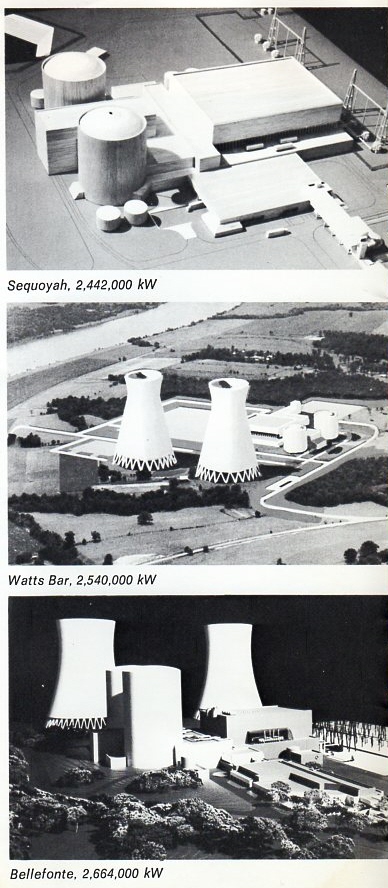
A TVA brochure from 1976 shows concept models of the Sequoyah and Bellefonte plants (top and bottom) and an artist's concept illustration of Watts Bar (center.)
At the start of 1971, TVA had either on order or under construction a total of four nuclear plants that contained a total of nine reactors and an aggregate generating capacity of more than 11,100 megawatts net. (It is important to note that the ratings given for the plants changed over their construction periods, generally increasing slightly.)
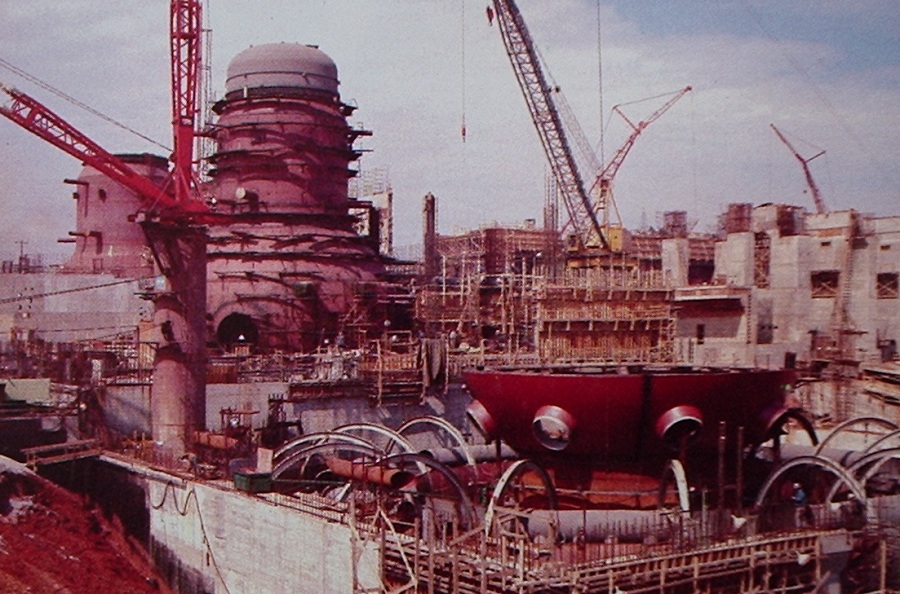
Browns Ferry nuclear plant under construction, showing the containment vessels for all three units (Unit 1 furthest from camera.) From 1976 TVA brochure.
In December 1972, TVA ordered an enormous nuclear generating plant. This plant, to be built near Hartsville, Tennessee, was to have four units on two mirror-image sub-sites, and was to be rated 5140 MWe total-the largest nuclear plant yet ordered anywhere at that time. Hartsville was to have been divided into "A" and "B" sites, with units called Hartsville A1, A2, B1, and B2. TVA ordered GE BWR/6 reactors for these four units-about as new then as the BWR/4 had been for Browns Ferry. The four nuclear islands of this plant were designed to GE's GESSAR (General Electric Standard Safety Report) design standard-an early industry attempt at standardization to ease design and licensing.
August 1974 was a significant month for TVA's nuclear program. On August 1, the first unit at Browns Ferry was finally placed in commercial operation. Also in that month, TVA incredibly ordered two more separate nuclear generating stations, in addition to those already ordered or being built. Phipps Bend nuclear plant (near Kingsport, Tennessee) was ordered with two GE BWR/6 reactors with a site total net output about 2600 MWe (also using the GE standard nuclear island, as with the four Hartsville units). Yellow Creek nuclear plant (near Corinth, Mississippi) was ordered with two Combustion Engineering "System 80" PWR reactors and a site total net output around 2600 MWe.
TVA stated in 1976 that by 1985 an incredible 45 percent of its total generating capacity would be nuclear. It now had seven nuclear generating stations on order with 17 reactors totaling more than 21 gigawatts of capacity. It had also now ordered NSSS equipment from all four major US vendors. (Interestingly, all of the units ordered in 1972 and 1974 were ordered with Brown Boveri turbine generators-a make that was quite unusual in US nuclear plants nationwide-and equipment for the six GESSAR-based nuclear units was ordered en masse with some savings over individual purchases.)
Units on line, units deferred, units cancelled-and units laid up
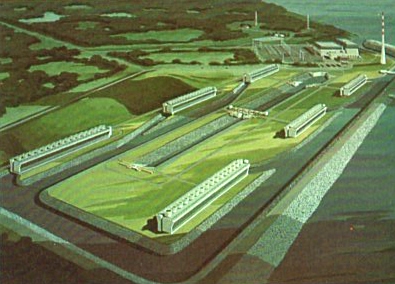
Before Browns Ferry was fully operational a giant 3000-foot-long complex of mechanical draft cooling towers was added to satisfy new legislation that restricted impact to natural bodies of water. From 1976 TVA brochure.
Those familiar with the history of nuclear energy in the United States (and in many others, where initial nuclear builds were not completed fully) will know what came next-reducing demand projections, regulatory slowdowns of the early 1970s, and then the regulatory semi-gridlock following the Three Mile Island accident. Increasing financing costs for nuclear plants would also be part of the mix. Browns Ferry came on-line and later encountered troubles, although the plant is on-line today with a solid record. Sequoyah's units entered service in 1981 and 1982; Watts Bar-1 was long delayed, only entering service in 1996, while Watts Bar-2 is scheduled to enter service in December 2015.
The plain fact is that the enormous demand increases experienced by TVA in the 1950s and 1960s did not continue through the 1970s and 1980s. In addition, regulatory delays and construction problems (as with most US nuclear plants during this period) began to drag out the timelines of plants under construction. By 1976, TVA knew that the original four-year-plan was impossible and was stating that plants could not be completed in anything less than about eight to ten years. However, it was still paramount that TVA be in front of anticipated demand and not behind it. A paragraph from a 1976 TVA brochure on Browns Ferry sets the scene perfectly well:
Under present procedures, nuclear plants started now will not be finished for 8 to 10 years-when children who are now in the second or third grade graduate from high school. Such long lead times require careful estimates, detailed plans, and prompt construction to provide adequate capacity for the future. Although it is possible for an estimate to be off in either direction, to err on the side of too little capacity too late would have much more serious social and economic consequences than to err on the side of planning new capacity too soon.
According to TVA, its load estimates began to decrease sharply in the 1980s-and it had an enormous amount of generating capacity under construction because of the principles outlined in the quote above, as did many other utilities across the entire United States. In August 1982, TVA made a decisive move. It cancelled Hartsville-B1 and -B2 (which were 17 percent and 7 percent complete, respectively) and Phipps Bend-1 and -2 (29 percent and 5 percent complete, respectively.) At the same time it indefinitely deferred Hartsville-A1 and -A2, as well as Yellow Creek-1 and -2.
In July 1984, TVA's staff recommended to the Board of Directors that the remaining unfinished units at Hartsville and Yellow Creek be cancelled as well, considering not only the load projections but also the cost increases (which were not by any means unique to TVA for nuclear plants under construction at this time). In October, this action became final and Hartsville-A1 and -A2 and Yellow Creek-1 and -2 were all cancelled (these were 44 percent, 34 percent, 35 percent, and 3 percent complete, respectively).
In limbo were the two Watts Bar units and the two Bellefonte units. Construction was slowed on all of these, and in 1988 TVA decided to place the two Bellefonte units in what it referred to as "layup," where maintenance would be performed to sustain what had been installed already, but no new equipment would arrive. Bellefonte-1 was 90 percent complete and Bellefonte-2 was 58 percent complete.
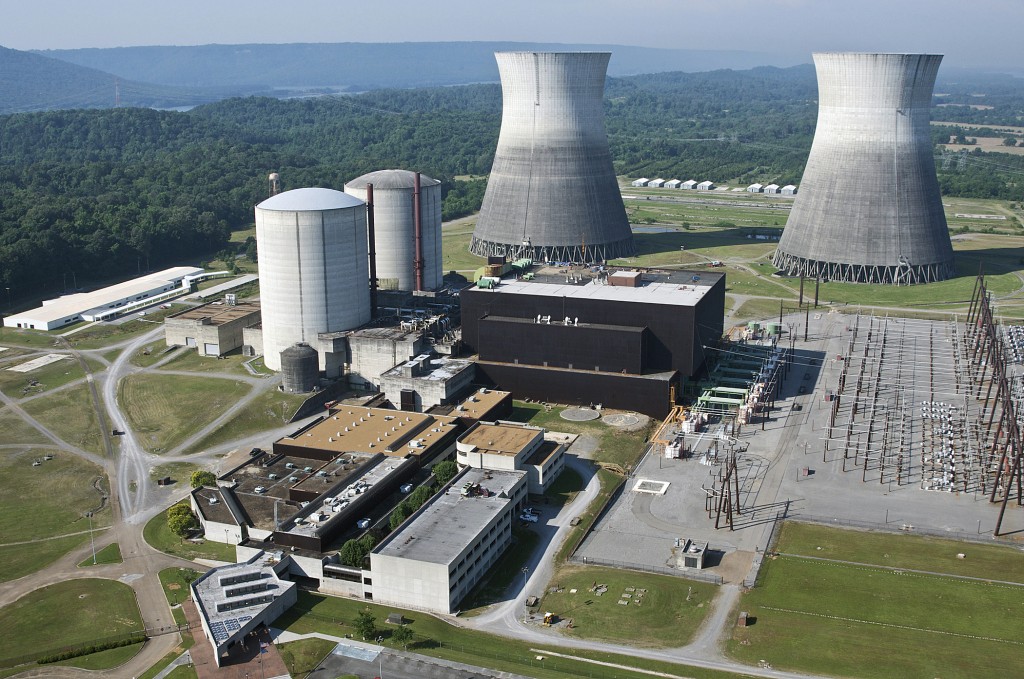
Bellefonte nuclear plant - Image courtesy TVA
Bellefonte remained essentially mothballed until 1993, when TVA restarted construction. By 2001, it expected to complete the units in 2011 and 2014; however, in 2005 the units were finally cancelled (amid plans to build Bellefonte-3 and -4 using Westinghouse AP1000 plants, and re-using some of the site services originally intended for the B&W units, such as substations). The plans for the AP1000 units also did not come to fruition, and although TVA eventually reversed itself again and began work on the original Bellefonte units, it has now announced in its Draft Resource Plan that the units are not in the future generating plans of the company. Whether or not this means that they'll finally be fully cancelled and dismantled remains open to question.
In the meantime, Watts Bar-2 remains as the last unfinished unit with hope of completion and operation from TVA's enormous original program, and if all goes well that will happen this year. If it does, and if TVA decides that Bellefonte will never be completed and begins to dismantle the site, the final shape of TVA's nuclear fleet will likely be taken, a half century after it was first imagined and conceived.
(Note: I have deliberately avoided mention of the Clinch River Site-either the breeder reactor of early days, or the small modular reactot plans of later days-as these projects were not properly TVA projects, per se .)
---------------------------------------------------------------------------------------------------
"TVA Power 1967" - TVA brochure F68P1
"Browns Ferry Nuclear Plant" - TVA brochure F76P2R
"The Nuclear Industry 1971 / WASH 1174-71," US Atomic Energy Commission, 1971
"General Description of a Boiling Water Reactor - BWR/6," General Electric, May 1978
"2012-2013 Information Digest," US Nuclear Regulatory Commission NUREG-1350 Vol. 24, August 2012
Nuclear Engineering International, September 1977
Nuclear Engineering International, October 1984
•All of these sources are in the author's collection. Illustrations from sources as noted.
-----------------------------------------------------------------------------------------------------

REPLAY: TVA makes announcement on small nuclear reactor
Clinch river site could house the first small modular nuclear reactor on tva's grid..

Just weeks after Gov. Bill Lee proposed investing $50 million to recruit companies to make Tennessee a leader in nuclear energy, the Tennessee Valley Authority gave the public its first look at the Clinch River Nuclear Site that could house the first next-generation reactor on TVA's grid.
Lee and U.S. Rep. Chuck Fleischmann, R-Chattanooga, joined the March 3 tour of the site a little over 30 miles west of Knoxville, near Oak Ridge. Fleischmann was appointed chair of the House Appropriations Energy and Water Development Subcommittee in January, and is known as one of Congress' foremost experts on nuclear energy .
"The rest of the world is moving forward on nuclear," Fleischmann said. "We need to be in this area. As (TVA CEO) Jeff Lyash has pointed out time and time again, the world's demand for electricity is going to continue to increase."
What is Gov. Lee's position on nuclear?
In his State of the State address on Feb. 6, Lee proposed investing $50 million to recruit companies to put Tennessee at the forefront of nuclear power generation. Lee said nuclear power could be a solution for advancing clean energy in the country while also being reliable and cheap.
"There's a lot of conversation around the world about energy independence, about what is clean energy (going to) look like going forward," Lee said during the Clinch River Nuclear Site visit. "TVA is leading the country in the development of these future reactors. We want Tennessee to be leading the country and creating the ecosystem that can surround the development of these reactors."
What is the timing for the Clinch River plant?
The Clinch River reactor would be a small modular reactor, a more compact and more easily constructed facility than the large nuclear power plants marked by cooling towers most people associate with nuclear energy.
If all goes according to plan, the Clinch River plant could be operational sometime in the 2030s, TVA senior technical advisor for the project Joe Shea said.
What is a small modular reactor?
A small modular reactor is a type of nuclear reactor that produces 300 megawatts of energy or less. Greg Boerschig, vice president of TVA’s Clinch River Project, told Knox News on Feb. 27 that modular construction - prefabricated units that are then shipped and assembled on site - make the units less expensive to build and more reliable.
According to TVA , these reactors could improve on existing nuclear power plant technology by:
- Being less expensive
- Taking up less space
- Taking less time to build
- Improving safety measures.
While current plants have parts that are made in factories, they still are built mostly on site, according to the Department of Energy . Small modular reactors could cut down on that issue as well as “the lengthy construction times that are typical” at large nuclear plants by having major parts of a small modular reactor plant built in a factory.
Boerschig said the Clinch River plant will be easier to operate and construct because of the simplicity of the design. The plant also will be smaller: one small modular reactor is "the size of a football field.”
With that ease comes lower costs. “Modular components and factory fabrication can reduce construction costs and duration,” the Department of Energy says in a fact sheet about the technology.
The small reactors also could improve safety measures, according to TVA . The traditional nuclear plants are big, and the larger the footprint, the larger the safety zone required around it.
“So if you look at the emergency planning zone for any plant in the U.S. that's operating today, it's 10 miles,” Boerschig said. “So that means if there's a casualty at a plant, the amount of area around the plant, the radius is 10 miles all the way around the plant that you have to protect because of the potential for a release that could impact.”
That would not be the case around a small modular reactor.
“For the plant that we're looking at, it's restricted to the site boundary, which means it would be less than 1,400 feet. So because of the smaller amount of fuel you have and the design of the plant, the safety advantages are tremendous,” Boerschig said.
What small modular reactor design could TVA use at Clinch River?
TVA is interested in putting in a small modular reactor designed by General Electric Hitachi Nuclear Energy and called the BWRX-300.
This particular small modular reactor is a generation three light water boiling water reactor, Boerschig said. The site could house about four small modular reactors, Shea said at the event.
For context, reactors online in the U.S. now are light water reactors and can either be a boiling water reactor, such as TVA’s Browns Ferry plant, or a pressurized water reactor, such as the Watts Bar or Sequoyah plants, Boerschig told Knox News.
Boerschig told Knox News that while the generation three small modular reactors use new technology, there aren't drastic differences from older reactors. GE's experience in building reactors means the technology is established as well as the supply chain.
By sticking with a design that is similar to previous generations of reactors, Boersching said there is less financial risk from delays or cost overruns.
The model favored by TVA also uses the same uranium fuel as TVA’s Browns Ferry Nuclear Power Plant. The fuel is uranium that is manufactured as pellets and then is put into rods. The main difference is there would be fewer bundles of fuel rods inserted into the reactor.
“The fuel we use is the same fuel that's used in the operating reactors today, so there's a well-established supply chain,” Boerschig said.
What do TVA and GE Hitachi need to do to prepare the site?
The Nuclear Regulatory Commission, which licenses and regulates civilian use of radioactive materials, said in an email that TVA’s 2019 permit says the Clinch River site is “suitable” as a “generic nuclear power plant, which TVA described as two or more SMR modules generating up to 800 megawatts of electricity."
Lyash, the TVA CEO, told Knox News in February that the public utility is working on a construction permit application and preparing infrastructure on the site.
TVA will decide whether to proceed with the Clinch River small modular nuclear reactor after it has a construction permit application ready to submit to the U.S. Nuclear Regulatory Commission, Lyash said. He estimates it'll be the first half of next year when TVA will make the decision.
GE Hitachi has regulatory hurdles of its own to clear for certification of its small modular reactor design.
What will happen to the waste from the Clinch River plant?
The amount of operational waste generated by the plant “should be about the same or less” per megawatt as a traditional plant, according to TVA. High level waste generated per megawatt also should be the same since the fuel, the efficiency and the fuel burnup rates “will be about the same” as plants like Browns Ferry.
Low-level waste is expected to be less based on the size of the plant, innovation, experience of running nuclear plants and the fact the plant is newer. Boerschig said low-level waste is material like trash that results from maintenance or operation of the plant.
The waste will be treated the same way it is at other TVA nuclear plants. The U.S. does not reprocess spent fuel, Boerschig said, so the waste is stored on site.
At Watts Bar, the process involves taking fuel rods out of the reactor and putting them in a pool to cool before storing them in dry storage casks at the facility.
Anila Yoganathan is a Knox News investigative reporter. Contact her at [email protected], and follow her on Twitter @anilayoganathan. Enjoy exclusive content while supporting strong local journalism by subscribing at knoxnews.com/subscribe .

IMAGES
VIDEO
COMMENTS
Hartsville Nuclear Plant KenJ (Atlas Obscura User) Planning for the next century's electrical needs, the Tennessee Valley Authority (TVA) broke ground on the Hartsville Nuclear Plant in 1975. At ...
The Hartsville Nuclear Plant is a canceled nuclear power plant project located near Hartsville, Tennessee. To be built and operated by the Tennessee Valley A...
Hartsville Nuclear Plant. / 36.35417°N 86.08583°W / 36.35417; -86.08583. The Hartsville Nuclear Plant is a canceled nuclear power plant project located near Hartsville, Tennessee. To be built and operated by the Tennessee Valley Authority, it was to have four General Electric boiling water reactors .
Raylan G. Huntsville, AL6 contributions. Nuclear Plant- History. Mar 2016 • Friends. People need to visit and see in person a part of our energy history. Although this plant was never operational, you can get a sense of the size and construction of the facility. The one cooling tower is captivating. There is a fence around most of the ...
1. Battle of Hartsville Memorial Park. 11. Historic Sites. By dewaynep2016. I highly recommend going by the visitors center first and know a little about the battle ahead of time.... 2. Hartsville Nuclear Plant. 3.
Along US Highway 25, near Hartsville, Tennessee, a concrete cooling tower looms over the pastoral landscape. Built in the late 1970s by the Tennessee Valley Authority (TVA), a federally owned public power company and regional economic development agency, the tower is a remnant of what TVA envisioned as the world's largest nuclear plant.
Robinson Nuclear Plant is an important asset to the people in Hartsville. Named after H. Burton Robinson, a former executive vice president of Carolina Power & Light, this nuclear plant has one Westinghouse 735 MW pressurized water reactor. As you walk around the place, you will also see the Robinson Lake near the plant.
Review of Hartsville Nuclear Plant. People need to visit and see in person a part of our energy history. Although this plant was never operational, you can get a sense of the size and construction of the facility. The one cooling tower is captivating. There is a fence around most of the structures but you have an excellent view from the road.
Nuclear Plant- History. Mar 2016 • Friends. People need to visit and see in person a part of our energy history. Although this plant was never operational, you can get a sense of the size and construction of the facility. The one cooling tower is captivating. There is a fence around most of the structures but you have an excellent view from ...
Closer to Nashville, TVA started work on a proposed nuclear power plant in Hartsville. A single cooling tower — 200 feet tall by 200 feet wide — was built before work stopped. Now TVA uses the ...
Explore Hartsville Nuclear Plant in Trousdale County with photos, map, and reviews. Find nearby hotels and start to plan your trip to Hartsville Nuclear Plant.
Empty Places: Nuclear Power. Scott Walker January 10, 2016. In the middle of rural America sits an empty and deserted Nuclear Plant. Some may find that hard to swallow, but it is closer than one might think to their backyard. The Hartsville Tennessee Nuclear Plant is in Trousdale County, a county with a population of less than 2,400 residents.
When the Tennessee Valley Authority halted construction of the Hartsville Nuclear Plant, it dashed the community's economic hopes. From 1981 to 1983, the per capita income of Trousdale County dropped by 21%, a reduction of more than $2,000 dollars.1 The economic effects of nuclear plant closures extended beyond Trousdale County: over 14,000 TVA employees were laid off statewide.2 When the ...
HARTSVILLE, S.C. — Murphy Monk can't even begin to put a number on the effect the H.B. Robinson nuclear plant has had on Hartsville and Darlington since it opened 50 years ago.
The H. B. Robinson Steam Electric Plant, also known as Robinson Nuclear Plant, is a nuclear power plant located near Hartsville, South Carolina.The plant consists of one Westinghouse 759 MW pressurized water reactor.The site once included a coal-fired unit that generated 174 MW (which was retired in October 2012 and demolished 2016) and a combustion turbine unit that generated 15 MW.
Hartsville Nuclear Plant: Nice to see - See 3 traveler reviews, candid photos, and great deals for Hartsville, TN, at Tripadvisor.
The former Hartsville Nuclear Plant (HVN) site is in Tennessee, largely in Trousdale County, with a small portion inadjacent Smith County. It is situated on the north shore of Old Hickory Reservoir at Cumberland River mile 284, on the 100-year floodplain of the Cumberland River, adjacent to dissected highlands.
After the Hartsville Nuclear Complex was canceled, the 1,500 acres owned by TVA remained empty for almost 20 years, until over 500 acres were sold for the creation of a "quality industrial park" intended to remedy the region's sluggish economic growth.1 The land was purchased by the Four Lake Regional Industrial Development Authority for $1.7 million in June 2002 to begin the ...
HARTSVILLE, S.C. - Safety and security get constant emphasis at the H.B. Robinson Nuclear Plant near Hartsville. That emphasis was evident when a Morning News reporter was given a tour of the ...
This plant, to be built near Hartsville, Tennessee, was to have four units on two mirror-image sub-sites, and was to be rated 5140 MWe total-the largest nuclear plant yet ordered anywhere at that time. Hartsville was to have been divided into "A" and "B" sites, with units called Hartsville A1, A2, B1, and B2.
0:03. 0:50. Just weeks after Gov. Bill Lee proposed investing $50 million to recruit companies to make Tennessee a leader in nuclear energy, the Tennessee Valley Authority gave the public its ...
The Tennessee Valley Authority began building Hartsville Nuclear Plant in the early 1970s and had completed nearly 75% of the construction before outside pressure from environmental groups and financial concerns caused TVA to abandon the project in the early 1980s.
HARTSVILLE, Tenn. (WSMV) - Three thrill seekers, one of whom parachuted into a shutdown nuclear plant cooling tower in Tennessee, were detained on Wednesday. Trousdale County Sheriff's Office ...